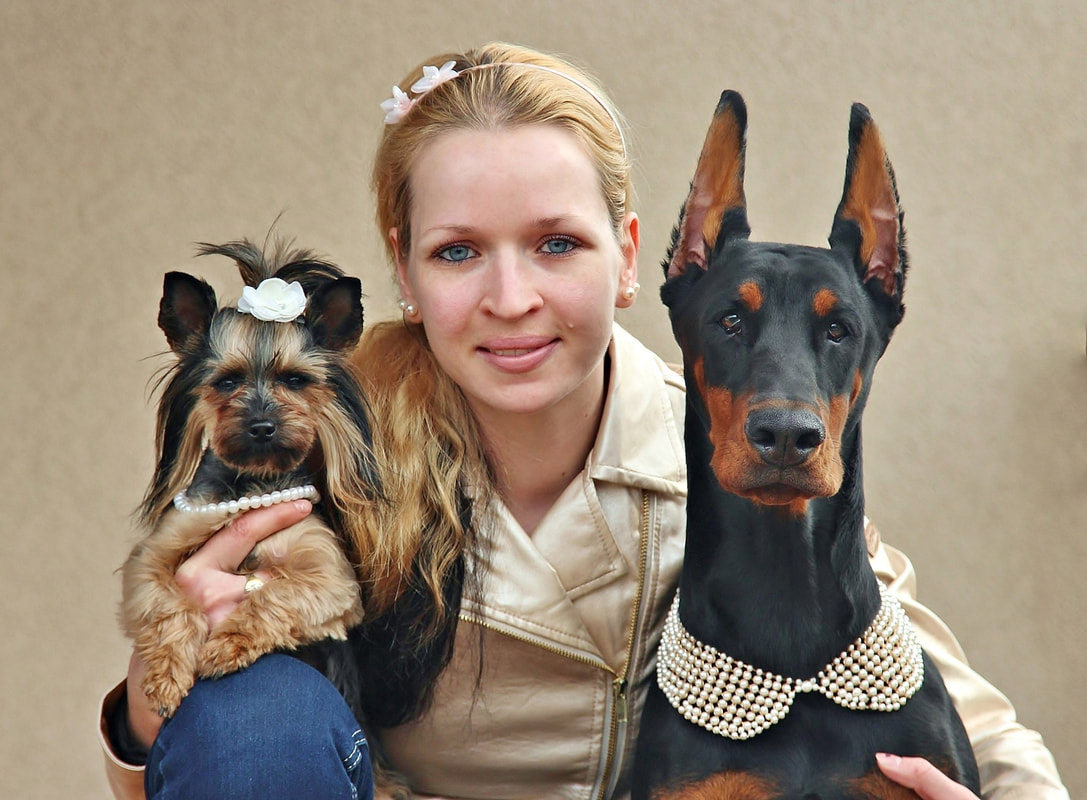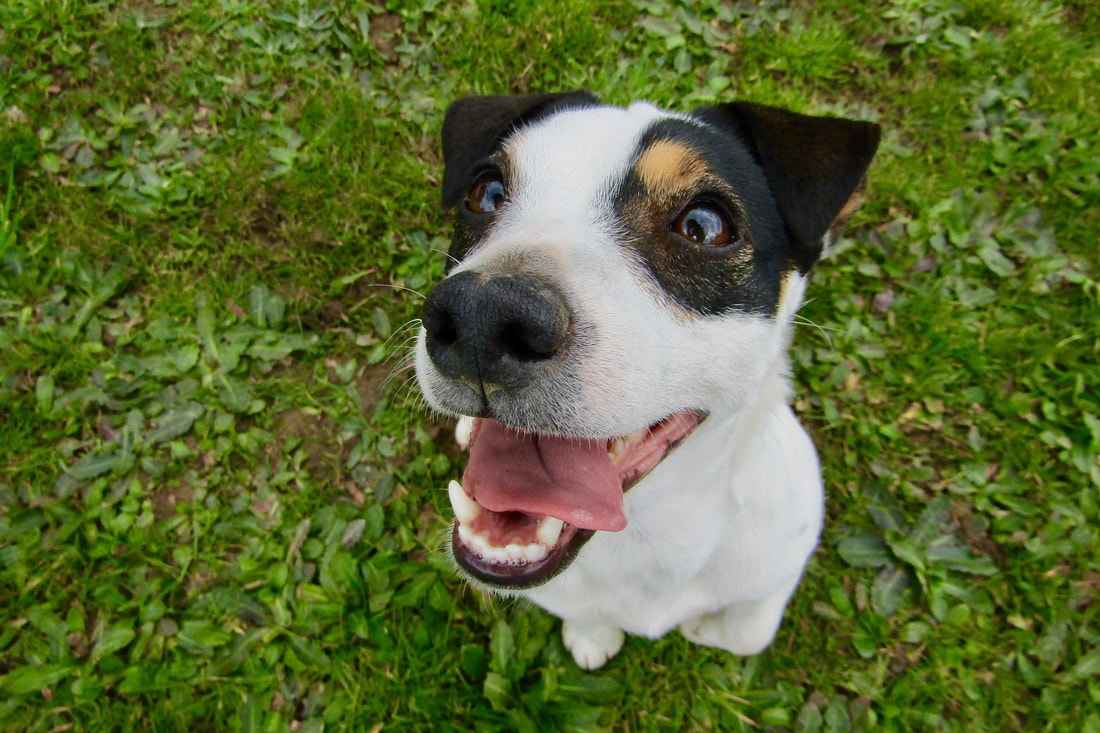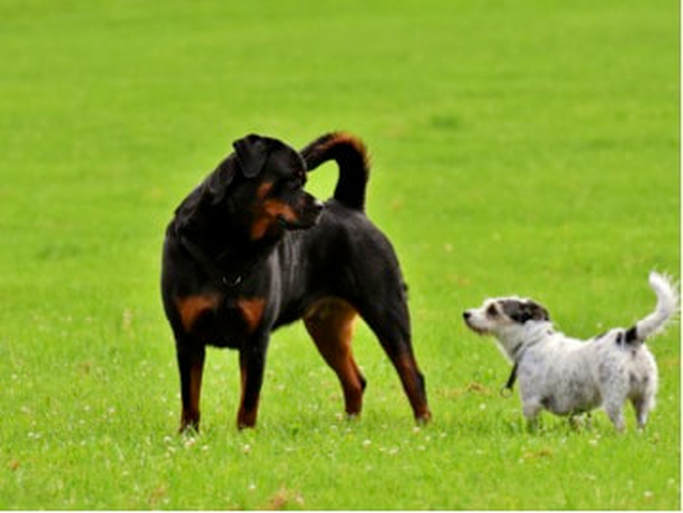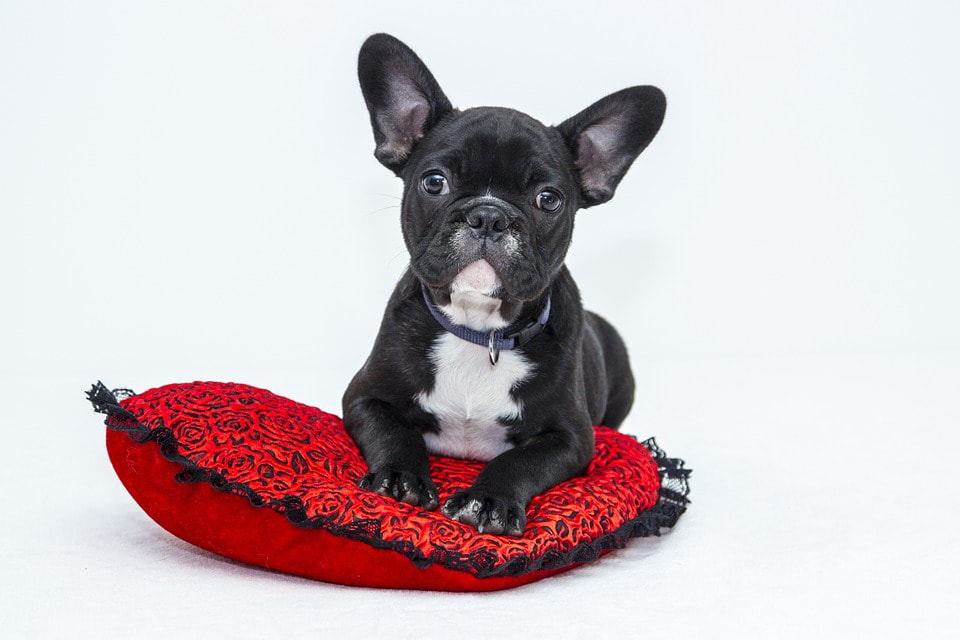|
Photo courtesy of Pixabay
With so much energy and personality, your pooch might seem indestructible, but many things you store at home could represent a serious danger to your dog. If you’re bringing home a new four-legged friend or just need a refresher on dog-proofing your home, here’s how to ensure that your precious pup stays safe. Store and dispose of leftovers carefully Some leftovers can be extremely dangerous to your dog. Make sure that leftovers, including onions, garlic, and grapes, are out of your dog’s reach. Candy bowls on coffee tables may seem safe, but if they contain chocolate, put them out of reach as well. Current research also shows that the artificial sweetener Xylitol is very toxic to dogs. And it’s well known that chicken bones can puncture a dog’s gastrointestinal tract. When it comes to the above dangers, you need to double-bag leftovers before putting them in the garbage unless you are taking out the garbage immediately. Also make sure you are using a trash can that can’t be easily tipped over by your dog. It’s worth noting that all dog owners need trash cans with secure lids or that are out of reach. If you are saving leftovers, place them in a plastic storage box with a tight lid, and put it in the refrigerator (not on a countertop or other surface accessible to your dog). Cleaning products Most dogs are not picky eaters, and their eagerness to eat anything may be a source of humor for owners. Still, that propensity to chow down on anything can get dogs in a lot of trouble. Mouthwash, moth balls and fabric softeners are particularly dangerous. These items need to be kept inaccessible to your dog. One way to keep your dog safe is to put all these toxins in a large plastic container with a sealed lid. Alternatively, you can put a lock or child safety device on your sink cabinet, or store these items in a wall cabinet or on a shelf that is well out of your dog’s reach. Make sure that your porches and front and back yards are also dog-safe zones. Keep antifreeze, herbicides, and pesticides in a locked cabinet in your garage or inside the house where you store your cleaners. Fortunately, most products used to eliminate pet odors can also be used as all-purpose cleaners, and these products are generally pet-safe as well. If you’re not sure what to buy, ask your pet store associate what she recommends in the way of a safe cleaner to use around your animal. Toilet Drinking Ah, yes, the dreaded doggie toilet sip. Dog toilet drinking might be worse or better than you think, depending on your habits. If you use any of the automatic toilet cleaning products (you know, the stuff that turns your toilet water blue), you absolutely must keep your dog out of the toilet. That stuff could make him sick, though the American Society for the Prevention of Cruelty to Animals (ASPCA) thinks it’s unlikely to kill him. Similarly, if you flush only periodically to save water, you too need to keep your pup’s head out of the toilet. Keep the toilet seat and lid down when the appliance is not in use. This is particularly a mandate if your dog is small enough to fall in the toilet. Keep the bathroom doors shut as a backup precaution. If, however, you flush after every use and clean the toilet bowl weekly without leaving chemicals in it, that doggie toilet drink is probably harmless. Some vets even think that steady supply of clean water might be better than what’s in the dog bowl. In our busy lives, it’s easy to forget there might be hazards lurking in our home that could be dangerous for pets. No one wants to lose their pup to a toxic home cleaner or yard product. A few easy precautions will ensure that your home is dog friendly and safe.
0 Comments
Avice for First-Time Pet Owners
Jessica Brody Ourbestfriends.petAccording to a 2017-2018 survey conducted by the American Pet Products Association (APPA), 68 percent of U.S. households — that’s about 85 million families — have pets. Over 244 million critters give comfort, make people smile, and provide unconditional love to their people. How exciting that you’re preparing to join this world! Picking the Right Pet Think about the following considerations as you decide which pet will be the perfect addition to your family. Your family’s lifestyle. Is your family constantly on the go and super active? You’ll want a pet that can keep up. Do you prefer to cuddle on the couch with a cup of tea, a good book, or your favorite Netflix show? You’ll probably welcome a critter with similar couch potato tendencies. Kids. Age often determines the best type of pet. Younger children do well with animals that don’t require a lot of care or aren’t as hands-on, like a fish, rabbit, or guinea pig. Older children who can help with pet care might welcome a dog or cat. Your home. A giant St. Bernard might not feel comfortable in a small, one-bedroom apartment. Greyhounds need zoom room. You’ll want a critter that fits your space. Time commitment. Some pets require much more time than others. A puppy needs obedience training. Younger animals need more hands-on time than older animals. Cost for care, upkeep, and supplies. Shaggy dogs (and even some cats) need regular grooming. Horses eat a lot of hay and grain. Cats love scratching posts. Certain reptiles are prone to illnesses that require frequent vet visits. After you’ve narrowed down the type of pet you’d like, research the average annual costs for their care. Local laws. Check with your landlord, if you rent, to make sure you’re allowed to have pets. Some cities and townships restrict the type of dog breeds allowed. Others frown on less traditional pets like potbelly pigs or guinea fowl. Health and safety risks. Reptiles, like turtles, can carry and spread salmonella, which is dangerous to young children and people with compromised immune systems. Certain dog breeds have reputations as nippers. Should I get a cat? Dog? Fish? Guinea pig? Bird? Hamster? Rabbit? Reptile? The American Veterinary Medical Association offers sage advice and links to these and more exotic critters that make good pets. Words of Wisdom The amount of time spent planning and researching your pet adoption is time well spent. Before you bring the critter home, make sure you pet-proof (it’s kind of like toddler-proofing) your home. Get down on your hands and knees (encourage your kids to help) to see things from a pet’s eye view. Find and remove or hide wires and other easily chewed and swallowed items. Move poisonous plants out of reach. Once you’ve brought your new pet home and introduced him to the family:
Friends with Benefits Our four-footed friends because make us happy and feel good. They love us unconditionally. They’re our wingmen and provide hours of entertainment. So, good luck finding your perfect match! Photo Credit: Pixaby.com
Don’t Let Your Dog Be a Bad Neighbor
By Aurora James http://dogetiquette.info/ Photo by Pixabay Your four-legged pal may be the most awesome dog on the planet. His love and affection for you is all you need to make it through the day. But your neighbors might not love him as much as you do, especially if you and your pup aren’t following dog etiquette. Luckily, it’s not that difficult to change your ways and teach your dog some basic manners. If your home has a yard but doesn’t have a fence, it’s time to get one. Keeping your dog contained makes your neighbors happy because he isn’t hanging out in their yard, digging, going to the bathroom, or being a general nuisance. It also keeps your pooch safe by preventing him from running off. You also won’t have to go outside in the freezing cold with him whenever he needs to go to the bathroom because you can just open the door and let him in and out. According to HomeAdvisor, the average cost to install a wood fence in Sacramento ranges from $1,270 to $2,893, so installing a fence won’t break the bank. Once you’ve got your fence installed, it’s time to work on his other manners, too. Don’t let him bark a lot. It’s annoying to your neighbors and can frighten nearby children. Your dog’s natural instinct is to protect his home and his family, so some barking is understandable. And some breeds naturally bark more than others. But if your pup is a chronic barker, it’s time to get that under control. Teach him that it’s OK to bark once or twice to alert you to danger, but tell him “no” after that. You can reward him when he stops barking with a treat or praise. Eventually, your dog will come to understand that only an initial bark is acceptable. Work on your dog’s greetings, too. When people come to the door, he should be able to sit nicely and greet them calmly, not barrel into people and knock them over. Get a friend to help out by knocking on the door, and make your dog sit and stay while you answer it. By training your dog, not only will friends be more likely to visit, but it will keep him safe from bolting out the door onto the street. When you’re out for a walk, your dog should be able to greet other dogs calmly and nicely. Some dogs are naturally more aggressive, and their owners won’t want your dog to get close. That’s perfectly OK. They know their animals and what works and what doesn’t. If your dog is not friendly to other dogs or people, cross the street to avoid them or stop and make him sit until the other person and dog have passed. If your dog is super friendly, ask first before introducing him and then allow him just enough leash to sniff and say hello. Remain calm because your dogs can sense your stress. If you’re not confident in your training abilities, there are tons of books on the market that will teach you how to train your pooch. There are YouTube videos created by professional dog trainers, and you can always hire a trainer to work with you and your dog. Working on some basic doggie manners will not only make your neighbors happier, it will give you better communication skills with your pup. The time you spend working on these skills will also be quality time you spend with your dog, so he’ll enjoy it, too. Your dog wants to please you, so give him the tools to make you happy.
Dog Etiquette: How to Bring Your Pup Out in Public
Your dog is your pal, your best buddy, the companion who gives you unconditional love in exchange for food, water, shelter, and the chance to run around with a tennis ball in his mouth. They’re also our companions outside the home. We take them for walks and spend some quality outdoor time with them and other dogs (and people, too) at the dog park. What’s more, they’re welcome at many pet shops and stores, plus more employers are allowing their staff to bring their dogs to work with them. But don’t think that your dog is immediately ready for some time at the dog park or out shopping with you. Some dogs are shy around people, and some have anxiety to the point that they are skittish even in their own backyard. While some love an afternoon at the local dog park, others will get hostile around other dogs. You may have the most gregarious pooch on the planet who thinks that everyone she sees is her friend and wants a big slurp on the face from her. When taking your dog out in public, keep in mind some basic dog-owner etiquette. 1. Walk Safely With a Good Collar The first way to better socialize your dog is during her walks. How many times have you seen dogs out on a walk with their owners, straining their leashes as the owners try to pull them away from a yard or another person. The dog ends up gagging and coughing, and the owner can’t wait to get home. To prevent this, invest in a good collar that keeps a dog from gagging as she strains. This collar will also keep your dog close by as you walk, whether it’s in the neighborhood, at the dog park, or in a dog-friendly store. The gentle pull on the leash reminds her to stay close to you. 2. “No” Means No, and “Down” Means Down The key to getting your dog to behave around strangers or other dogs, or even scurrying away at the sight of someone, is impulse control, and that also involves your collar, leash, and a handy bag of treats. If you’re out on a walk with your pup and he sees someone, he’ll want to lunge forward to make friends. That may be the best time to pull on his leash and say, “No.” When he relents, give him a little treat. When he looks like he’s going to plant his paws on the other person, say “Down” and pull on the leash. Once he’s down, slip him a treat. When someone visits your home and your dog gets excited, take him by the collar, say “No” (often if you have to), then give him a treat. Get him used to those two words. Adding “That’s a good dog” is helpful, too. 3. Have a Pack of Dog Essentials You may be able to enjoy an afternoon out without something to drink or snack on, but your dog probably won’t. When you go out, be sure you have some essentials, including a small container of food, portable food and water bowls, some bottles of water, and, yes, the dog equivalent of a “diaper bag” containing a roll of waste bags, a cleaner, some paper towels, and, of course, some treats. Having one of these is especially essential if you’re going to take your dog to work with you. And while some of the larger pet stores already have items for cleanup if a pet has an accident, other non-pet stores most likely won’t. As The Washington Post reports, dogs make us feel good, and we make them feel good. But as much as we love our pooches, we need to consider others. So next time you’re out with your pup, make sure to practice dog etiquette. Photo Credit: Pixabay.com
How To Maintain A Beautiful
Home As A Dog Owner There ain't no bones about it — Americans love dogs. Approximately 89.7 million pooches live in households across the U.S., a number that's increased by a little over 20 million over the past 18 years. While there are several benefits of ownership such as companionship, allergy resistance, better heart health, increased physical activity, a decrease in stress and naturally adopting a more active social life, the truth of the matter is, a dog can potentially have a negative impact on your home if you're not careful. Here's what you need to know about maintaining a gorgeous residence without compromising your relationship with your furry friend. Keep Your Pet And His Things Clean A dirty dog only equates to a dirty — and smelly — abode, so make an effort to keep your pooch fresh and clean. Establish a regular grooming routine that includes a thorough shampoo and trim or de-shedding if you have a breed with long tresses. Research a professional groomer in your area so that you don't have to deal with the hassle of trying to hold your dog down in place while sudsing up. Wipe off muddy or snowy paws before your canine gets into the house to prevent having to clean up dirty prints on the floor. Don't forget that your pet's bed, toys and leashes eventually become smelly, too, so toss them in the wash (providing it's OK to do so) and let them dry out in the sunshine outside to kill additional odors. Provide A Comfortable Place To Sleep If you want to prevent your pooch from leaping up on the couch or snoozing on your bed, then provide a comfortable place for Fido to sleep. The first step is to research and choose a bed that meets the needs of your dog's size and age. Next, place and introduce the bed and make an effort of pointing it out. Place some favorite toys and treats next to it to make it more tempting. Try providing a command such as "go to bed" while placing a treat in the area — provide an additional treat if this is successful. Repeat these steps until the routine is established and always encourage your pooch to sleep in its bed day and night. Prevent Indoor Destruction Nothing's more frustrating than torn up walls and chewed up furniture, but there are a few dog-proofing tactics you can implement to prevent a disaster before it happens. Experiment with placing a taste deterrent (such as Bitter Apple) to make areas like the corner of your couch less appealing. Give your hound plenty of acceptable things to chew on so that temptation doesn't set it. It's also important to remember that sometimes destructive activity is because of boredom, so make sure you're spending enough time playing with your pooch, going for walks, or heading to the dog park so that they can expel any pent-up energy. Maintain A Beautiful Yard The outdoors is just as susceptible to damage as the indoors — especially when it comes to your lawn. Like the indoors, prevent digging by providing enough playtime and exercise and plenty of toys and chews. Consider installing a sandbox where your pooch can freely dig without destroying your grass. Many dog owners report success by incorporating digging deterrents such as citrus peels, cayenne, plastic chicken wire, rose bushes and a sprinkler system with a motion sensor. Consider Your Flooring Options Consider flooring options that can be cleaned easily, reduce noise and provide comfort for your dog, thus potentially reducing behavioral problems. If you have carpeting, make sure you're regularly getting it professionally deep cleaned in between weekly vacuum sessions. Sadly, the majority of dogs that go into the shelter each year are euthanized, not adopted. With that in mind, make sure you take time to research the various types of breeds to determine which ones would be less apt to wreak havoc on your home. Keep in mind that this is only a guide as previous home life often affects a dog's behavior. Photo Credit: Pixabay |
AuthorWrite something about yourself. No need to be fancy, just an overview. ArchivesCategories
All
|





 RSS Feed
RSS Feed
